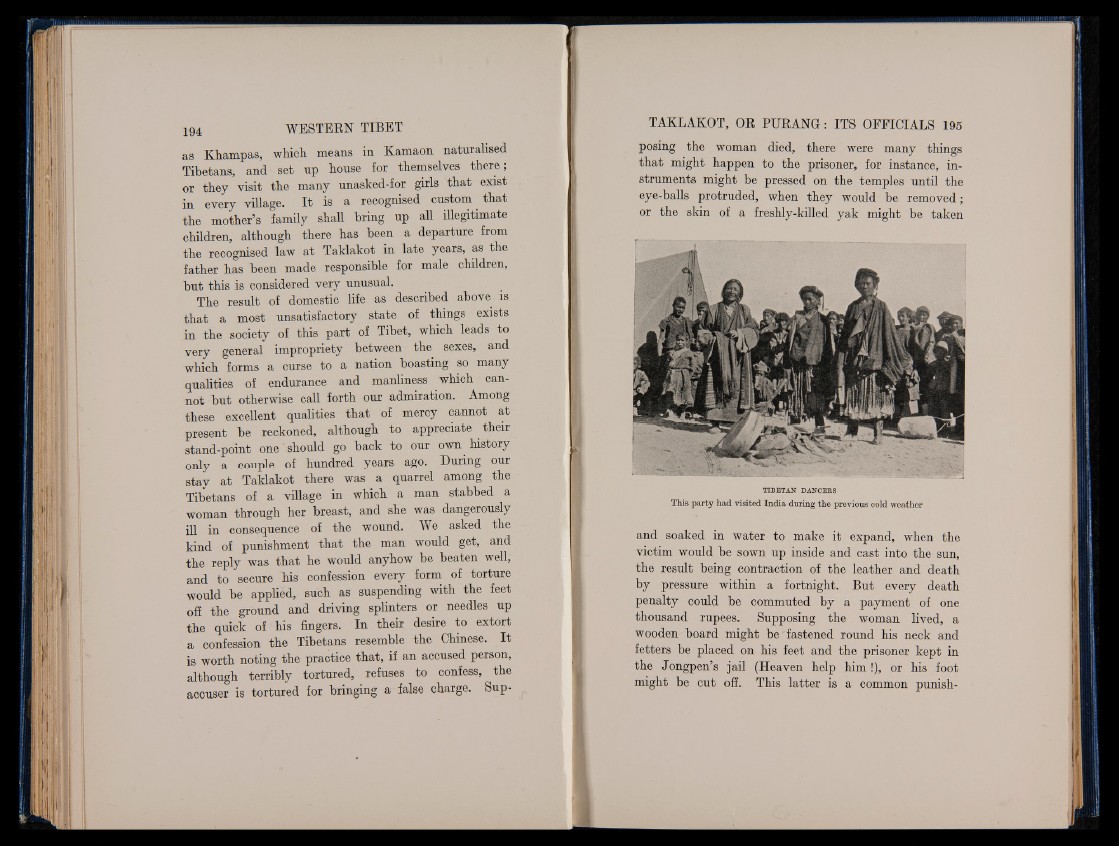
as Khampas, which means in Kamaon naturalised
Tibetans, and set up house for themselves there;
or they visit the many unasked-for girls that exist
in every village. I t is a recognised custom that
the mother’s family shall bring up all illegitimate
children, although there has been a departure from
the recognised law at Taklakot in late years, as the
father has been made responsible for male children,
but this is considered very unusual.
The result of domestic life as described above is
that a most unsatisfactory state of things exists
in the society of this part of Tibet, which leads to
very general impropriety between the sexes, and
which forms a curse to a nation boasting so many
qualities of endurance and manliness which cannot
but otherwise call forth our admiration. Among
these excellent qualities that of mercy cannot at
present be reckoned, although to appreciate their
stand-point one should go back to our own history
only a couple of hundred years ago. During our
stay at Taklakot there was a quarrel among the
Tibetans of a village in which a man stabbed a
woman through her breast, and she was dangerously
ill in consequence of the wound. We asked the
kind of punishment that the man would get, and
the reply was that he would anyhow be beaten well,
and to secure his confession every form of torture
would be applied, such as suspending with the feet
ofl the ground and driving splinters or needles up
the quick of his fingers. In their desire to extort
a confession the Tibetans resemble the Chinese. It
is worth noting the practice that, if an accused person,
although terribly tortured, refuses to confess, the
accuser is tortured for bringing a false charge. SupThis
posing the woman died, there were many things
that might happen to the prisoner, for instance, instruments
might be pressed on the temples until the
eye-balls protruded, when they would be removed;
or the skin of a freshly-killed yak might be taken
TIBETAN DANCERS
party had visited India during the previous cold weather
and soaked in water to make it expand, when the
victim would be sown up inside and cast into the sun,
the result being contraction of the leather and death
by pressure within a fortnight. But every death
penalty could be commuted by a payment of one
thousand rupees. Supposing the woman lived, a
wooden board might be fastened round his neck and
fetters be placed on his feet and the prisoner kept in
the Jongpen’s jail (Heaven help him !), or his foot
might be cut off. This latter is a common punish -